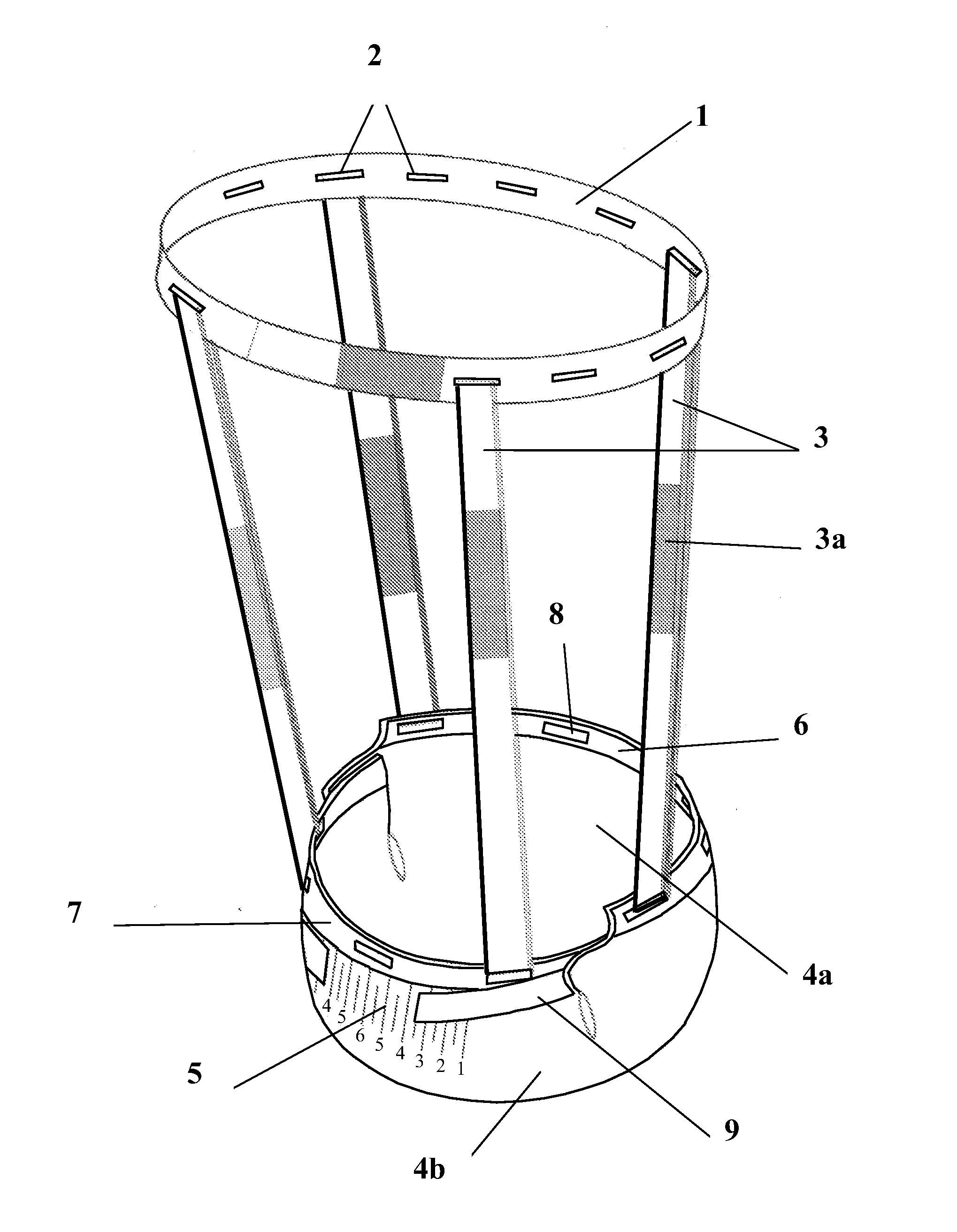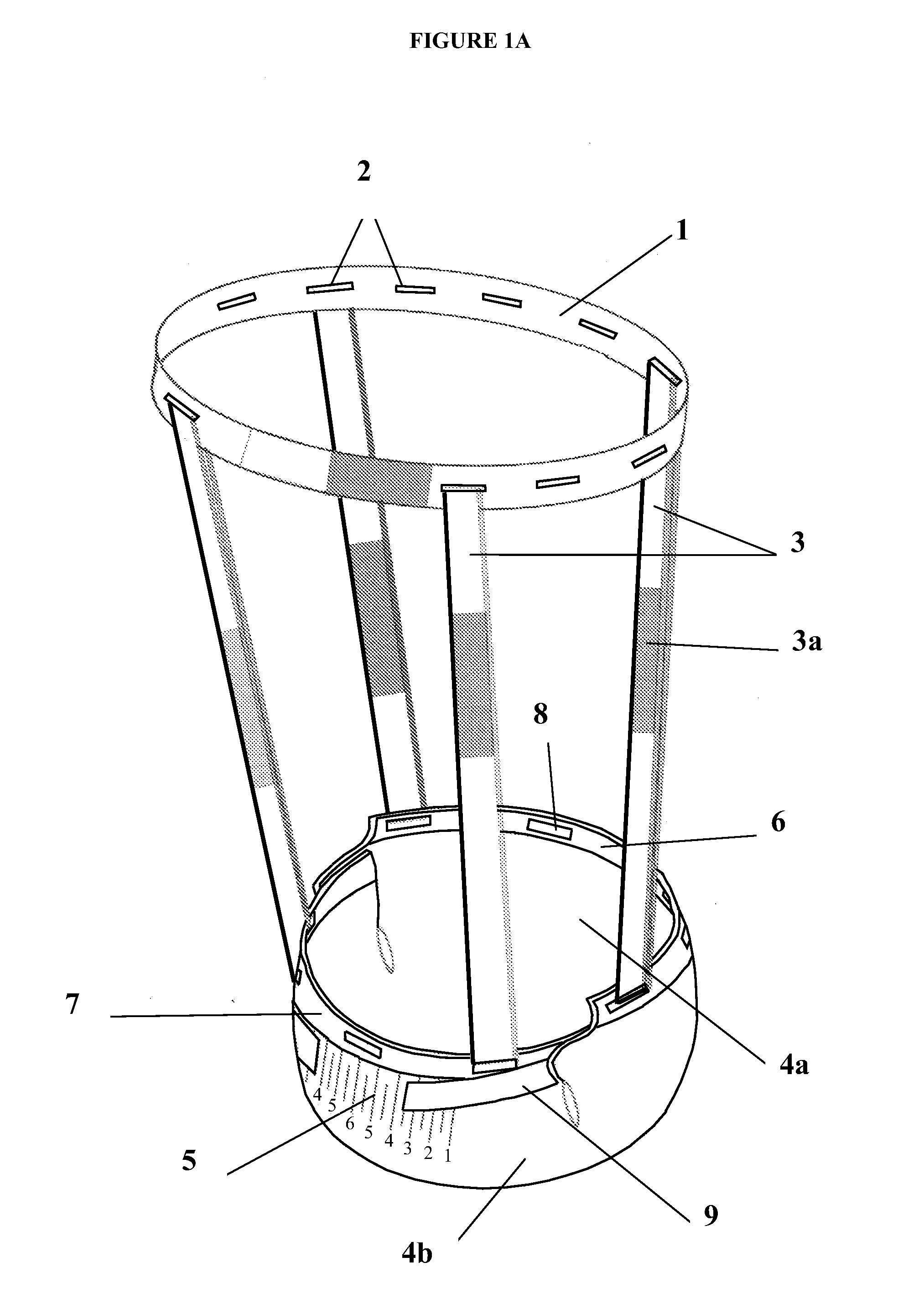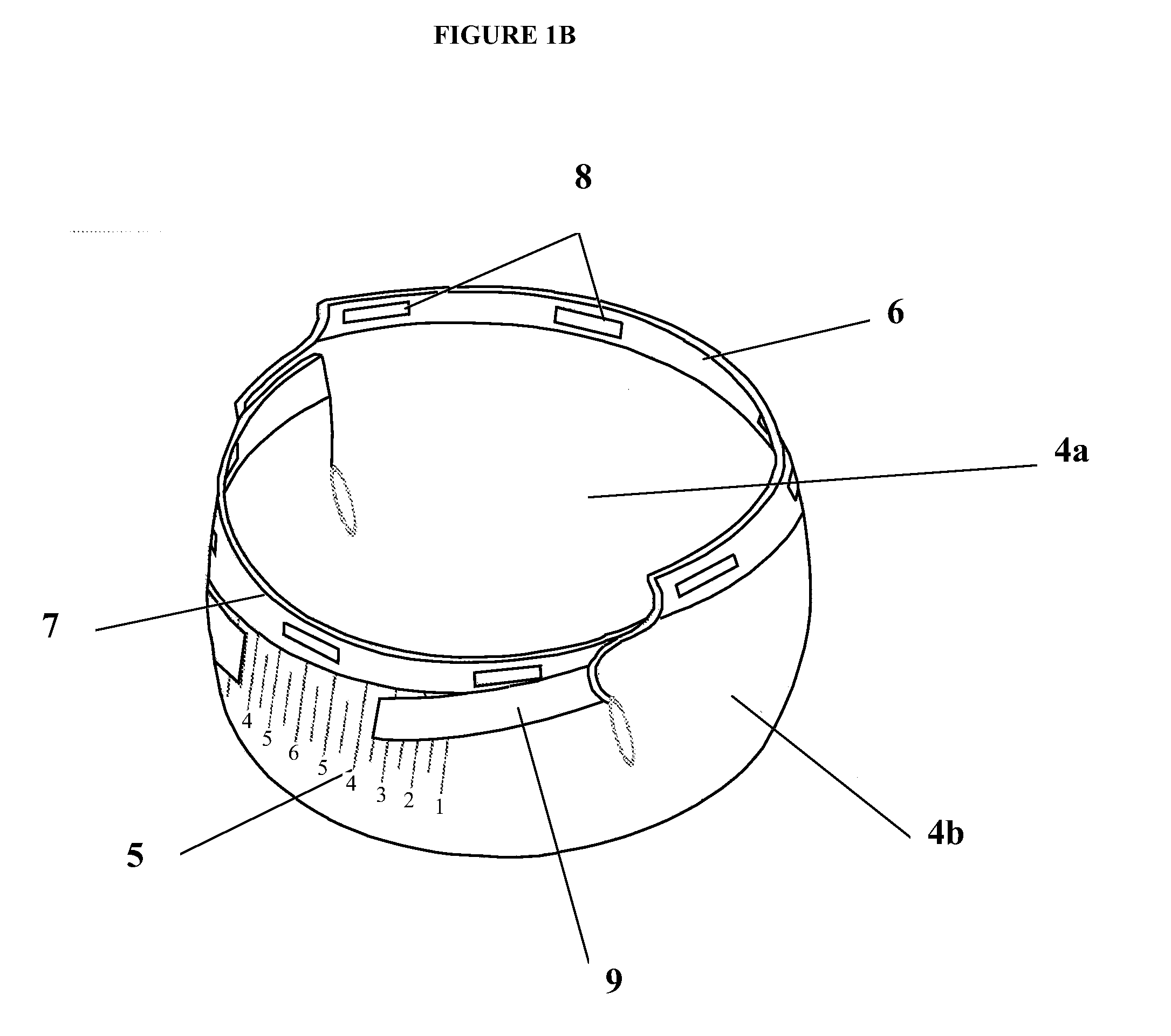Amputation dressings
a technology for amputation and dressings, applied in the field of amputation dressings, can solve the problems of affecting healing, affecting circulation and limb strangulation, and affixing soft dressing materials to the limb stump without creating localized points of unacceptably low or high pressure, so as to prevent infection, promote wound healing, and hinder healing
- Summary
- Abstract
- Description
- Claims
- Application Information
AI Technical Summary
Benefits of technology
Problems solved by technology
Method used
Image
Examples
Embodiment Construction
[0031]The invention relates to devices, systems and methods for post-surgical treatment of subjects experiencing an amputation (e.g., limb amputation, digit amputation). Specifically, the invention relates to devices (e.g., dressing systems) for secure placement of wound dressing material (e.g., bandage material) on the body of a subject.
[0032]While the post-surgical period is a critical time for healing and a determination of long-term recovery, there is little consensus as to best practices for post-surgical care of amputation wound sites. Post-surgical management of amputation wounds necessitates frequent changes of dressing materials to prevent infection and to promote wound healing. Affixing soft dressing materials to the limb stump without creating localized points of high pressure, however, can be problematic. For example, wrapping soft dressing material with elastic bandage material circumferentially around the distal portion of an amputation limb stump to hold dressing mate...
PUM
 Login to View More
Login to View More Abstract
Description
Claims
Application Information
 Login to View More
Login to View More - R&D
- Intellectual Property
- Life Sciences
- Materials
- Tech Scout
- Unparalleled Data Quality
- Higher Quality Content
- 60% Fewer Hallucinations
Browse by: Latest US Patents, China's latest patents, Technical Efficacy Thesaurus, Application Domain, Technology Topic, Popular Technical Reports.
© 2025 PatSnap. All rights reserved.Legal|Privacy policy|Modern Slavery Act Transparency Statement|Sitemap|About US| Contact US: help@patsnap.com



